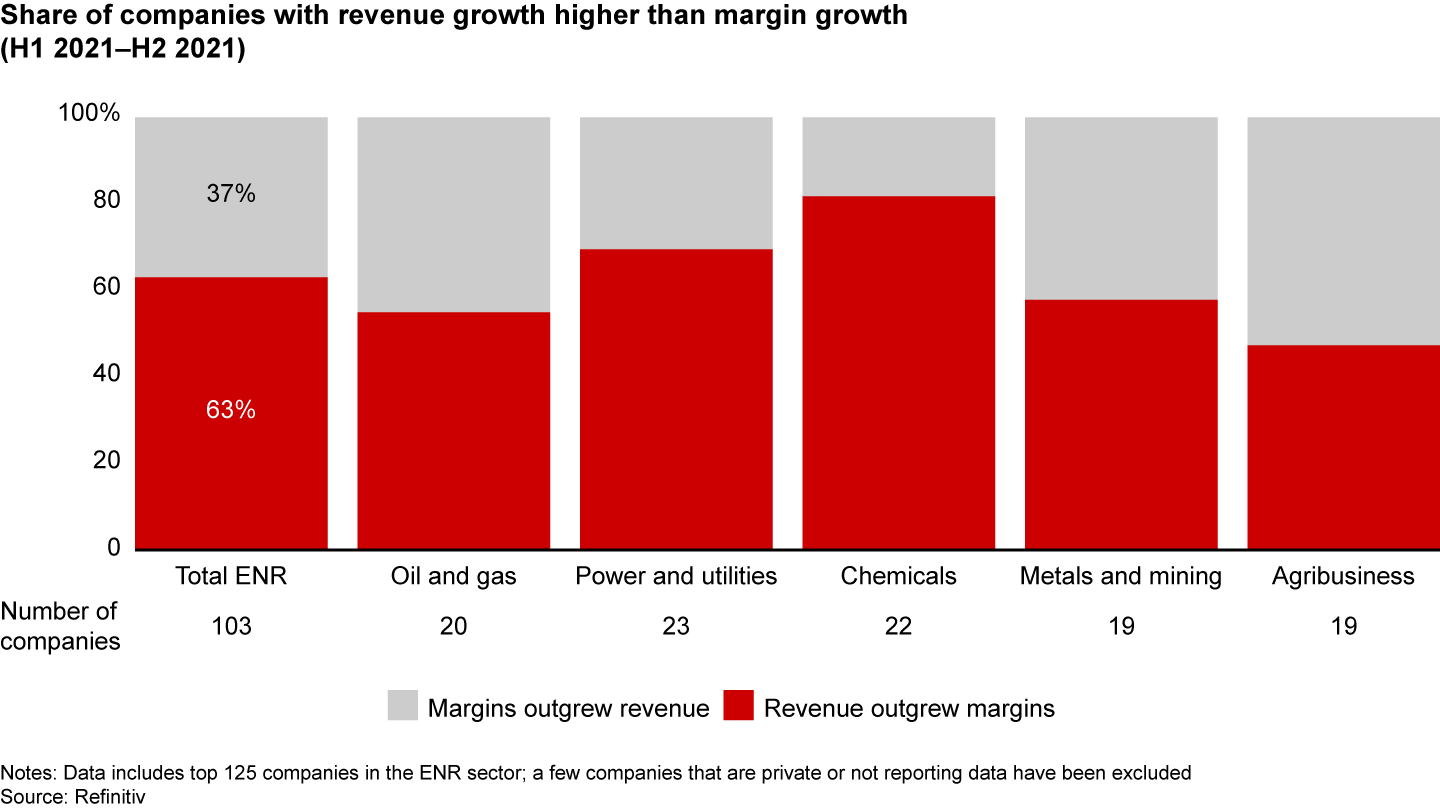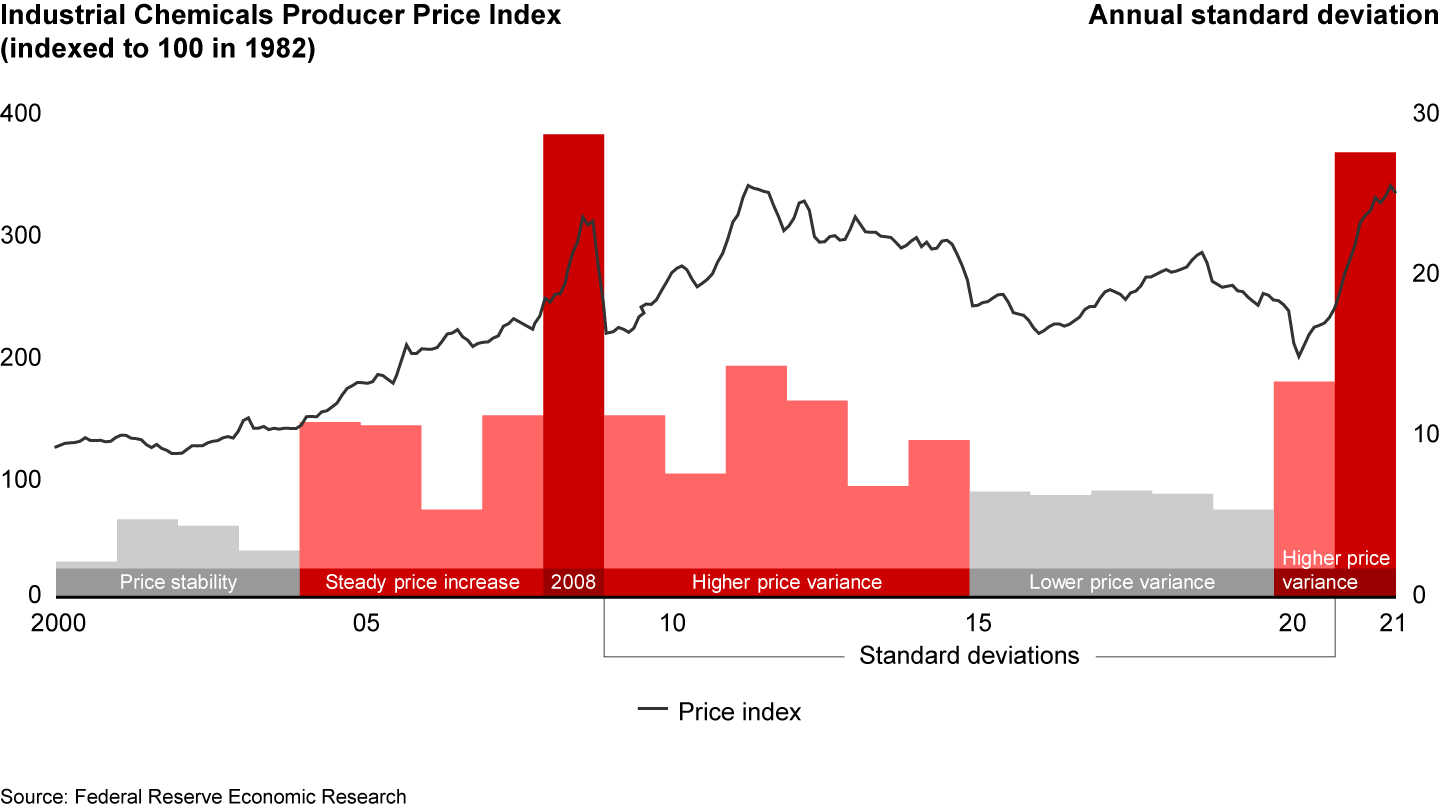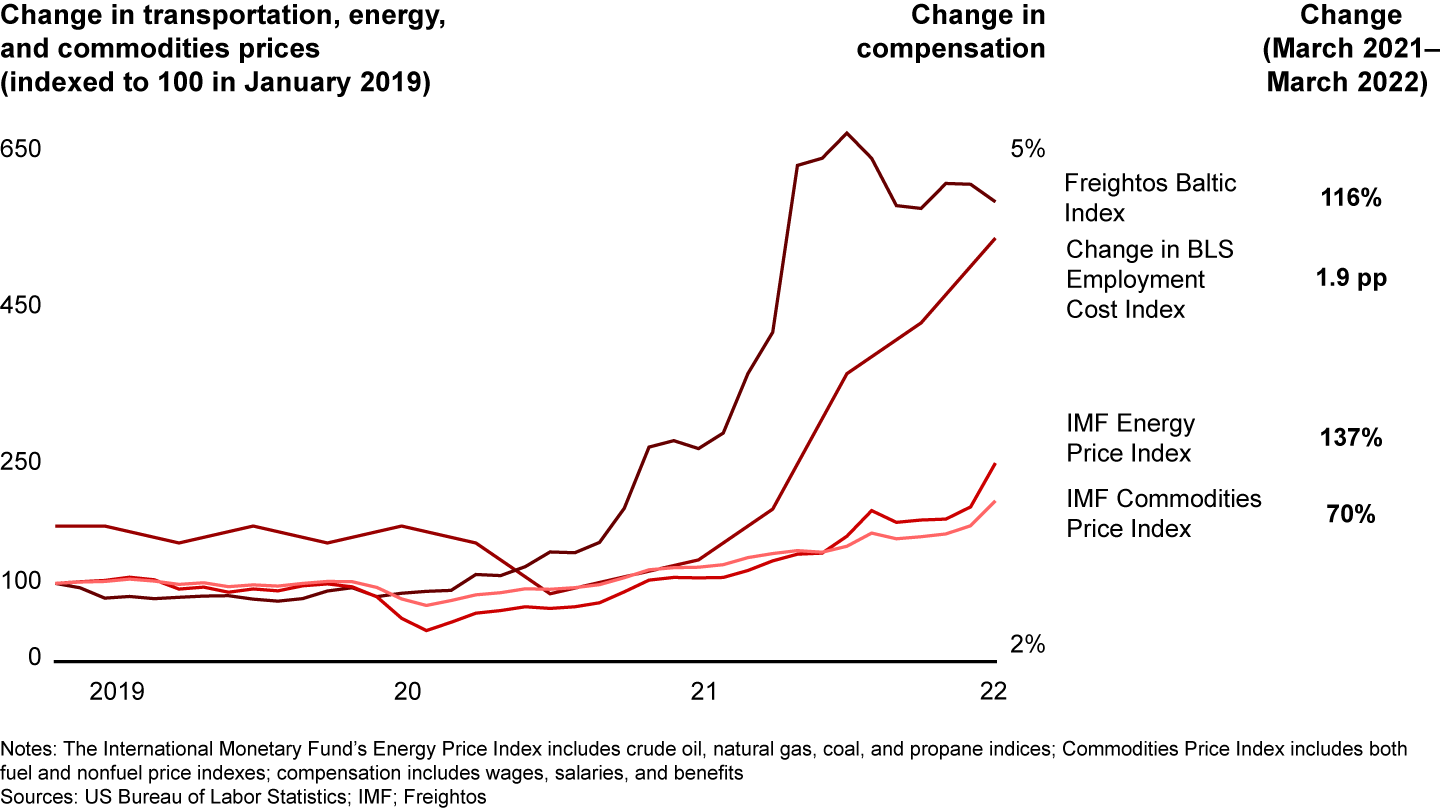Energy & Natural Resources Report
 }
}
At a Glance
- Many executives at energy and natural resources companies thought inflation would be short-lived and that their positions on the value chain would protect them from increases.
- But inflation has persisted and looks likely to continue, along with pricing volatility. Companies need to adjust their pricing policies.
- The current crisis could spur companies to build up dynamic pricing capabilities that adapt to inflation spikes and prevent margin leakage.
- Carefully evaluating the profitability of customers and products, effectively enforcing contract terms, and centralizing pricing decisions are just some of the ways companies are responding.
This article is part of Bain’s Energy and Natural Resources Report 2022
No company is immune. After years of low volatility and stable inflation rates, energy and natural resources (ENR) companies have faced a steady stream of disruption: Covid-19 and its bounce back, unpredictable events like the Texas electricity blackouts or the container ship Ever Given blocking the Suez Canal, and now the war in Ukraine, which will reverberate in commodity markets for a long time.
Pair these disruptions with broad, continuing inflation, worker shortages, and rising labor costs, and it isn’t news that many companies are struggling to recoup cost increases, leading to flat or even declining margins even as they post record top-line results and sell out their products (see Figure 1).

Seeing the blind spots
Until recently, many executives have heralded two prevailing responses to this environment that, when taken together, create a blind spot for ENR companies and their approach to pricing.
“This is temporary and will soon pass.” Over the past year or two, many executives have taken the stance that they just need to get through the next three or four months, until business as usual returns. However, if history is a guide, while inflation spikes may resolve after a couple of years, possibly tempered by recession, volatility is likely to persist. Consider chemicals. Coming out of the 2008 financial crisis, price volatility continued for nearly seven years before the sector stabilized (see Figure 2). The reality is beginning to sink in for many executives: This may be more than a temporary phenomenon.

“We’re structurally protected from this.” Many ENR companies feel that their positions near the beginning of their value chains protects them from cost pressures. Even when the cost of inputs rises, they can usually make up margins in their sales. But this focus on raw inputs overlooks the other costs of doing business, which are also rising. Shipping costs have doubled since March 2021, and labor costs in the US were up 4.5% in the fiscal year ended March 2022, an increase from 2.6% the previous year (see Figure 3).

Amid all this turbulence, executive teams have been applying the same pricing playbooks, policies, and approaches that they used before this upheaval. Maybe it shouldn’t be surprising; prolonged inflation like this hasn’t reared its head since the 1970s. Most corporate leaders haven’t had to deal with macroinflation during their careers, leaving them unsure of how to proceed.
One thing is becoming clear, though: What worked before, no longer works as well. Dynamic pricing will become more important. Frequency of increases, decision rights, rigor of cost forecasts, back-order and freight policies, contract terms and conditions—everything is on the table as executive teams grapple with how best to protect margins without upsetting customers.
The crisis as catalyst
Over the past year, executives have been trying out a range of actions to redefine their approach to pricing. Volatility and inflation may be the forcing mechanism of the moment. But by building pricing capabilities that allow them to react and adjust quickly, they’re positioning their companies for long-term success.
- Recognize not all customers are the same. As economics change, so does the profitability of products and customers. In a volatile environment, companies need to understand those changes and take action. Some products cost more to deliver, and those increases need to be passed along. We’ve seen more companies willing to walk away from low-value customers, especially when capacity is constrained—although sales teams shouldn’t bear the brunt of this approach. At one power grid hardware company, a review showed where inflation was creating a gap between “sold” profitability and “delivered” profitability on many projects. By adjusting contracts and pricing to account for this, the company ensured they were capturing the value they intended.
- Exchange price for other valuable features. As prices increase, some companies are offering other incentives to customers, like volume guarantees, exclusivity periods, or better service. When prices rose at one agrichemicals company, it began offering price hedging to customers. Developing the capabilities to manage the hedging actually made pricing more predictable for customers and created a new revenue stream that helped stem a margin leak.
- Enforce what’s already in the contract. Price increase contingencies in contracts are of little value if companies don’t enforce them. Many are now going back to review those terms, estimating the value of enforcing them, and equipping their commercial teams with the right data and scripts to have these difficult conversations with confidence. One company found it had simply misapplied indexes on one contract, leading to more than $10 million of missed revenue over several years.
- Consider indirect increases. In addition to price increases tied to inflation indexes, companies are getting more comfortable adding surcharges for fuel, expedited shipping, inventory holding, and longer payment terms. Cost-of-living adjustments (COLA) are also playing a meaningful role in recovering cost increases in recent months. Some are tightening up on special exceptions, like small or rush orders, that create margin leaks. The average industrial company loses over 6% of revenue through off-invoice discounts and leakage, according to a global sample analyzed by Bain and PricefxPlasmaTM.
- Adjust the product mix. During a period of inflation and supply shocks, deciding what to sell can be even more important than deciding whom to sell to. It’s critical to have a view of profitability by SKU, as well as by customer. One power producer has reacted to volatile costs by selling different types of power packages, while also rethinking the mix of its power-generating assets. Just as firing bad customers makes sense, so does shifting away from marginally profitable products.
- Centralize pricing decisions. Companies often push pricing decisions close to the customer, but in volatile or inflationary times, centralized decisions can make more sense. Individuals and sales teams can’t always make decisions that reflect companywide constraints and options. Data on cost increases may not show up in sales tools. We’re seeing companies organize global pricing programs that are far more directive to regional or business unit champions, to ensure that inflation costs are addressed.
No one can be certain, but history suggests that inflation bouts typically last about 30 months. However, the cure is often a recession, so volatility may persist even as prices level off. There are also plenty of signs to suggest structurally long-term inflation, including an aging workforce, investment costs of the energy transition, and repatriation of supply chains. Even after the high-single-digit inflation numbers are reined in, we may return to higher base levels than in the 2010s.
In any case, the various potential outcomes all lead to the same takeaway: Companies that acknowledge the persistence of volatility and rewrite their pricing playbooks are more likely to maximize price realization, expand margins, and take advantage of pricing as a competitive weapon.


